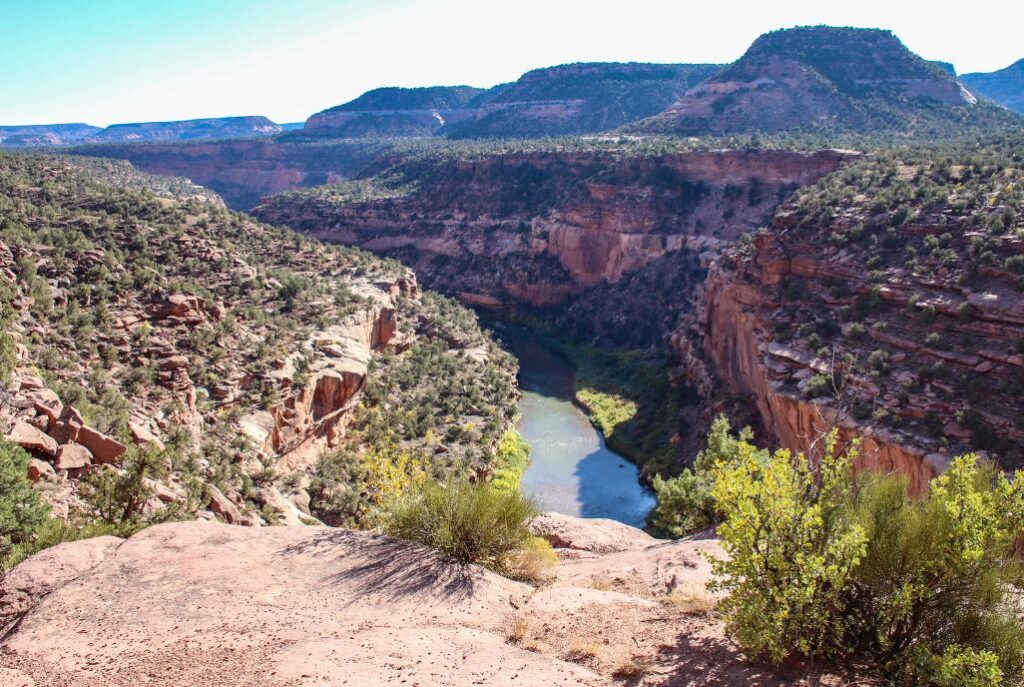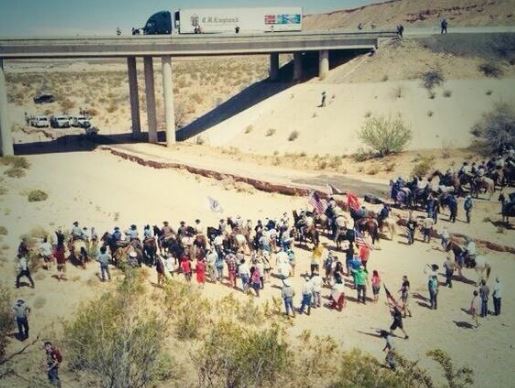By Alicia Inez Guzman
NM Political Report
Anger toward the Forest Service has been smoldering for a century. Raging wildfires brought it roaring to life.
TIERRA MONTE — The air smells of ash and the landscape is leached of color. Spots of green punctuate the valley floor in places. But along the ridges, the powdery residue of charred trees has fallen like snow, accumulating up to 4 inches deep. These are the slices of forest where the fire burned the hottest, scorching ponderosa pines from crown to root. Once titans, they are now matchsticks.
Pola Lopez gestures in their direction, southward toward Hermits Peak. Before a tsunami of flames ripped through this canyon in Tierra Monte, the canopy was so thick that it was impossible to see the nearby mountain. But two prescribed burns set by the U.S. Forest Service — one on Hermits Peak, the other in Calf Canyon to the southwest — have changed all that.
When the blazes merged to form the biggest wildfire in state history, flames engulfed nearly 160 acres of riparian forest that once belonged to her father. “It wiped us out,” Lopez says.
Like so many in the devastation zone, she squarely places the blame on the USFS, not only for starting a prescribed burn in the windy month of April — when gusts reached 70 miles per hour — but for a century of conflict with rural communities. Known locally as La Floresta, the USFS is often seen as a feudal lord, a faraway government entity that has accumulated vast holdings with little idea of how to properly steward them or enough funds to do the job.
The community’s fury runs almost too deep for words, says Antonia Roybal-Mack, a Mora native whose family lost hundreds of acres to the fire. “Really pissed off is literally an understatement.”
In nearly two dozen interviews with people affected by the Hermits Peak/Calf Canyon fire, the same sentiments emerge: The USFS has a history, locals argue, of mismanaging the forest. In particular, they say the agency has limited or prohibited people from the long-held tradition of collecting firewood and other timber, the kind of maintenance the forest needed. If they had been able to tend to it the way they had for generations, they believe the conflagration would have been far less devastating.
“The prescribed burn was the match,” says Roybal-Mack. “But the fuel was there for decades when they wouldn’t let people into the forest to collect vigas or firewood.”

Century-old harm
Embedded in the tension is the history of land grants in New Mexico, a system that allowed Spanish settlers, Indigenous peoples and others of mixed descent to obtain tracts of land at the edge of the northern frontier, during Spanish and Mexican rule. From the late 1600s forward, scores of these settlers were granted ejidos, or wildland and forest commons.
In the late 1800s and early 1900s, a mostly Anglo cadre of speculators and profiteers began to claim ownership of the commons, using subterfuge and legal loopholes to essentially transfer the forests to private ownership or the federal government. Well over one million acres eventually ended up in the jurisdiction of the USFS, the University of New Mexico’s Land Grant Studies Program estimates.
In today’s fire zone, the descendants of the dispossessed are among the Forest Service’s sharpest critics. They are joined in their distress by villagers, small-scale farmers, loggers, foragers of traditional food and medicine, Indigenous peoples and acequia parciantes, caretakers of the age-old irrigation ditches now compromised by flames. The USFS has fallen short of its commitment to the land and those who live alongside it, they say.
As the conflagration whips through public and private lands — as of June 6, burning nearly 500 square miles — anger, frustration and grief define the tenor at public forums, in evacuation centers and on social media. Some locals say that, if given the chance, they would have practiced far more sustainable forest thinning in partnership with the USFS, thereby lessening the impacts of a catastrophic fire. Others criticize the way fire crews heavily relied on backburning, a fire-suppression tactic that involves starting smaller fires to deprive a larger wildfire of fuel.
The Santa Fe National Forest, for its part, is committed to working in tandem with local residents and sustaining “traditional communities, their cultures, traditions and values,” according to spokesperson Julie Anne Overton. “Collaboration and partnerships will continue to be the foundation for our work in managing our public lands,” she says.
But so fierce are the emotions and so profound the losses that Roybal-Mack, a lawyer who now lives in Albuquerque, expects to file a lawsuit on behalf of hundreds of plaintiffs, along with the firm Bauman & Dow.
The forests belong to the people, as San Miguel County Commissioner Janice Varela puts it.
“We locals, we feel like, hell yes, it’s our forest,” says Varela, a long-time water activist. “Yeah, we let the Forest Service manage it and we let everybody in the world come here, but it’s our forest. We have ownership from our proximity to it, from our history and cultural connection to it, from our heart.”

‘It was Armageddon’
Chaos ensued when villagers from Mora were ordered to evacuate on May 2, nearly a month after the fire began. “It was Armageddon,” says Travis Regensberg, a general contractor who towed his bulldozer in from Las Vegas to cut fire lines around homes.





Comments
Comments are closed.